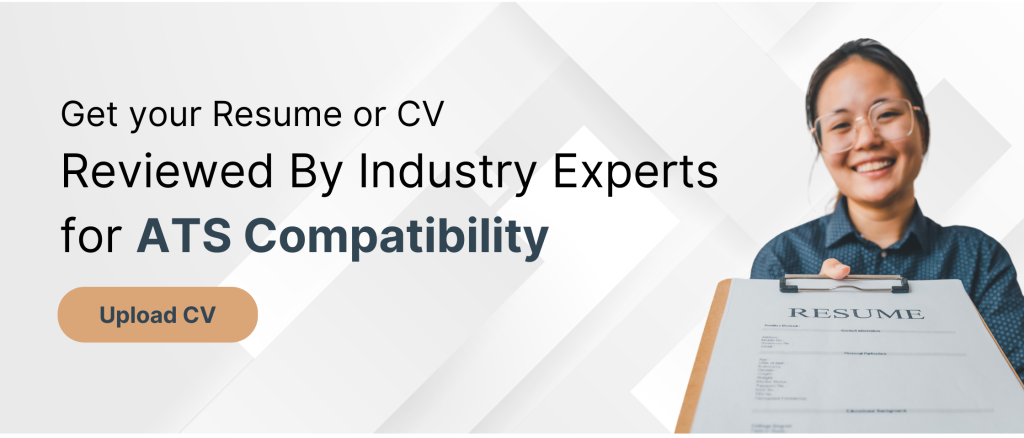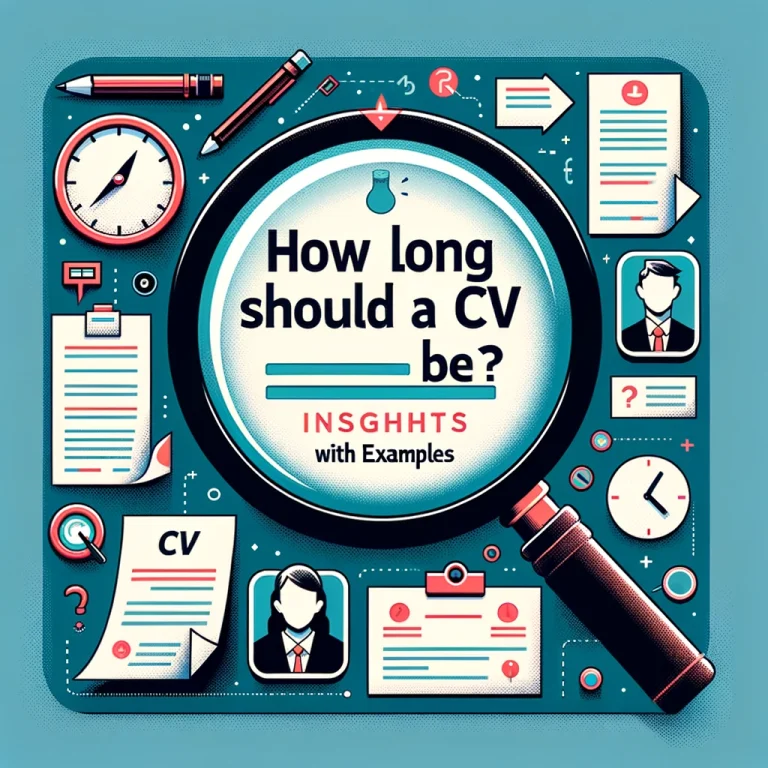Best format for resume writing [with examples]
In the competitive job market, your resume is your first opportunity to make a strong impression on potential employers. The format you choose can significantly impact how your skills and experiences are perceived. This guide explores the best formats for resume writing, helping you to present yourself in the most compelling light.
Introduction
A well-crafted resume is a critical tool in your job search arsenal. It’s more than a list of jobs; it’s a personal advertisement, showcasing your achievements, skills, and potential. The best resume format for you depends on your background, industry, and the type of job you’re applying for.
Understanding Resume Formats
There are three main types of resume formats: chronological, functional, and combination. Each format serves a different purpose and highlights various aspects of your professional journey.
- Chronological Resume: Focuses on work history, listing jobs in reverse chronological order.
- Functional Resume: Emphasizes skills and abilities over specific job titles or places of employment.
- Combination Resume: Merges elements of both chronological and functional resumes, emphasizing both skills and work history.
Choosing the Right Resume Format
Selecting the right resume format is crucial. It should reflect your strengths, career objectives, and the requirements of the job you’re applying for.
Chronological Resume
This format is ideal for individuals with a strong work history and clear career progression. It allows employers to quickly see where and how you’ve developed your skills over time.
- Structure and Content: Start with your most recent job and work backward.
- When to Use: Best for those with steady career growth in the same industry.
Functional Resume
The functional resume is suited for individuals who want to highlight their skills rather than their job history. This can be beneficial for career changers, recent graduates, or those with gaps in employment.
- Structure and Content: Focus on skill categories relevant to the job you’re applying for.
- When to Use: Ideal for showcasing transferable skills or when transitioning to a new industry.
Combination Resume
Combination resumes offer the flexibility to highlight both your skills and your work history, making it a versatile choice for many job seekers.
- Structure and Content: Start with a skills summary, followed by a chronological work history.
- When to Use: Great for candidates with a mix of significant professional achievements and specific, relevant skills.
Chronological Resume Format Example
[Your Name]
[Your Address]
[City, State, ZIP]
[Phone Number]
[Email Address]
[LinkedIn Profile (optional)]
Objective
A brief statement about your career goals and how you can contribute to the company you’re applying to.
Work Experience
Most Recent Position
[Job Title]
[Company Name], [Location]
[Dates of Employment]
- Bullet point describing a key responsibility
- Bullet point highlighting a significant achievement
Previous Position
[Job Title]
[Company Name], [Location]
[Dates of Employment]
- Bullet point detailing a responsibility
- Bullet point focusing on an accomplishment
Education
[Degree]
[University Name], [Location]
[Graduation Year]
Skills
- Skill 1
- Skill 2
- Skill 3
Certifications (Optional)
[Certification Name], [Issuing Organization], [Year]
Functional Resume Format Example
[Your Name]
[Your Address]
[City, State, ZIP]
[Phone Number]
[Email Address]
[LinkedIn Profile (optional)]
Objective
A concise statement detailing your career objectives and what you aim to bring to the position.
Professional Skills
Skill Category 1 (e.g., Project Management)
- Description of how you applied this skill
- Specific outcome or achievement
Skill Category 2 (e.g., Customer Service)
- Description of skill application
- Notable result or recognition
Work Experience
List only the job titles, company names, and dates, focusing less on the details of each role and more on the skills above.
Education
[Degree]
[University Name], [Location]
[Graduation Year]
Certifications (Optional)
[Certification Name], [Issuing Organization], [Year]
Combination Resume Format Example
[Your Name]
[Your Address]
[City, State, ZIP]
[Phone Number]
[Email Address]
[LinkedIn Profile (optional)]
Objective
A detailed statement combining your career objectives with a summary of your most relevant skills and experiences.
Professional Highlights
Key Skill or Achievement 1
- Description of how you’ve excelled in this area
Key Skill or Achievement 2
- Description of significant outcomes or projects
Work Experience
[Most Recent Job Title]
[Company Name], [Location]
[Dates of Employment]
- Detailed bullet points focusing on responsibilities and achievements that relate to the skills highlighted above.
Education
[Degree]
[University Name], [Location]
[Graduation Year]
Skills
A concise list of additional skills relevant to the job you’re applying for.
Certifications (Optional)
[Certification Name], [Issuing Organization], [Year]
These examples outline the structure and content for each resume format, providing a solid starting point for creating your own resume. Customize each section to reflect your unique experiences, achievements, and professional journey.
Tailoring Your Resume for the Job
Customizing your resume for each job application is crucial. Analyze the job description to identify key skills and experiences the employer is looking for and reflect these in your resume.
Design and Layout Tips for Your Resume
Your resume’s design and layout should be professional and easy to read. Use clean fonts, consistent formatting, and clear headings to guide the reader’s eye.
Avoiding Common Resume Mistakes
Ensure your resume is free of typos and grammatical errors. Avoid including unnecessary information that doesn’t support your application.
Digital-friendly Resumes
Many companies use Applicant Tracking Systems (ATS) to screen resumes. Incorporate relevant keywords from the job description to ensure your resume passes these initial screenings.

Finalizing Your Resume
Proofread your resume multiple times and consider getting feedback from mentors or professionals in your field.
Best Format for Resume Writing
Choosing the best resume format involves understanding your career goals, the nature of your experience, and the expectations of your industry. The key is to present your background in a way that highlights your strengths and aligns with the needs of potential employers.
Conclusion
Crafting a resume that stands out requires careful consideration of format, content, and design. By selecting the appropriate format and tailoring your resume to each job, you can significantly increase your chances of landing your dream role.
FAQs
- How often should I update my resume?
It’s a good practice to update your resume at least once a year or whenever you gain new skills, complete significant projects, or achieve professional milestones. Additionally, you should tailor your resume for each specific job application to ensure it aligns with the job description and requirements. - Can I use a combination resume if I have gaps in my employment?
Yes, a combination resume can be particularly effective if you have gaps in your employment. This format allows you to focus on your skills and accomplishments upfront, rather than the chronological order of your work history. It highlights your strengths and minimizes the visibility of employment gaps. - Should I include a photo on my resume?
In most cases, it’s advisable not to include a photo on your resume, especially in the United States and Canada, where it can lead to bias in the hiring process. However, in some countries and industries, a professional photo may be expected. Always research the norms for your industry and location before deciding. - How long should my resume be?
For most professionals, a one to two-page resume is ideal. Entry-level candidates with less experience should aim for a one-page resume, while those with extensive experience, multiple roles, or significant accomplishments might extend to two pages. Ensure every piece of information is relevant to the job you’re applying for. - What is the best way to include keywords for ATS?
To optimize your resume for Applicant Tracking Systems (ATS), include keywords that match those found in the job description. Use both long-form and acronym versions of qualifications, skills, and certifications. Ensure the keywords are naturally integrated into your achievements and responsibilities, rather than just listed. - Is it necessary to customize my resume for each job application?
Yes, customizing your resume for each job application is crucial. This involves aligning your skills, experiences, and qualifications with the specific requirements and keywords mentioned in the job description. Customization increases your chances of passing ATS screenings and demonstrates to employers that you are genuinely interested in the role
Crafting an effective resume is a strategic process that involves choosing the right format, tailoring content to specific job requirements, and ensuring the document is ATS-friendly and error-free. By following the guidelines outlined in this guide, you can create a resume that not only showcases your strengths and achievements but also resonates with potential employers, increasing your chances of securing job interviews.
🔴Do you have an ATS (Automatic tracking system) Compliant CV?
🔴Do you have a CV which is globally acceptable?
🔴Do you have professional content in your CV?
✅Get your CV designed and developed today !! Professionally .
Visit www.prosumely.com
Get your Resume reviewed for free by industry experts: Click


![How to Add Experience in Your CV [With Examples]](https://prosumely.com/wp-content/uploads/2024/02/DALL·E-2024-02-01-19.50.00-A-visually-engaging-square-cover-image-for-a-blog-titled-How-to-Add-Experience-in-Your-CV-With-Examples.-The-image-should-feature-a-sleek-profess-768x768.png)



![How to Mention Education in Your Resume or CV [With Examples]](https://prosumely.com/wp-content/uploads/2024/01/DALL·E-2024-01-29-21.21.08-A-visually-captivating-and-professional-square-cover-image-for-a-blog-post-about-How-to-Mention-Education-in-Your-Resume-or-CV.-The-image-should-fea-768x768.png)
